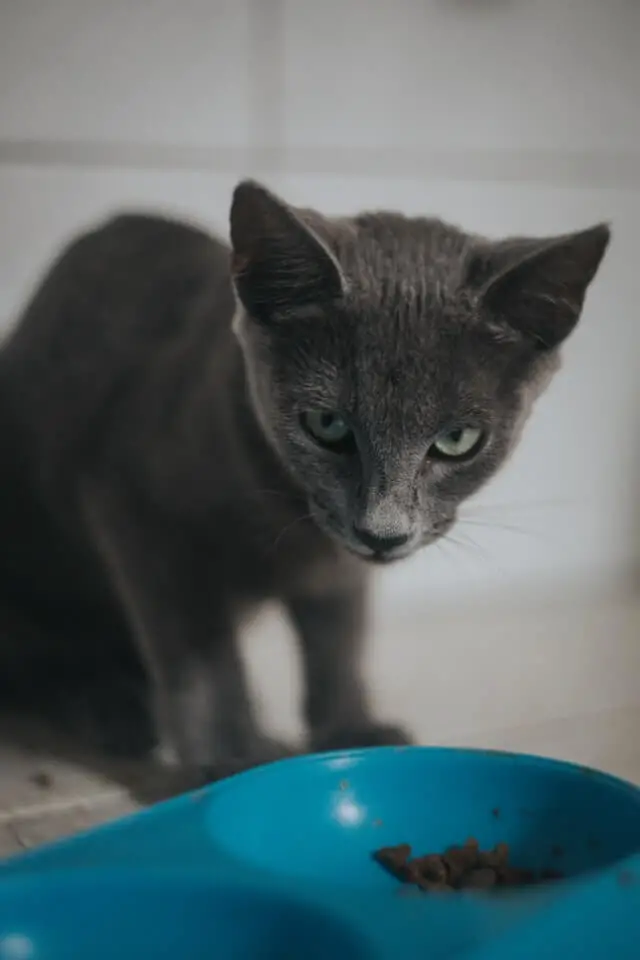Intestinal worms are a common issue of any cat. Regular worming treatments are necessary if you want to keep your cat healthy. But how do cats get worms, especially indoor ones? This is a question many cat owners don’t know the answer to.
Some outdoor cats love to roam around. Others spend their entire life indoors and have never even set a paw outside.
If your cats fall under the second category, you probably think she is safe from parasites such as worms. Believe it or not, outdoor cats still can end up having issues with these terrible parasites. To understand how this happens, you have to know there are several ways how cats get worms.
How Do Cats Get Worms?

There are several ways cats can get worms. Even indoor cats aren’t safe! Here are several ways cats get parasites and how to prevent them.
-
From Ingesting Worm Eggs
If a cat is infested with roundworms, its microscopic eggs will be found in the cat’s feces. These eggs then stuck to the environment, such as garden soil or grass.
It sounds incredible, but eggs can survive several years on the ground before they find another host. Only then they’ll continue with the development process.
A curious cat can eat these eggs in more than one way. For example, if she walks over the infested ground, then licks her feet. This will cause a roundworm infection.
Hookworms are a bit different, as their eggs hatch on the ground and release larvae. Your cat can later swallow larvae on many different occasions.
Similarly, if you’ve walked over the infested ground, eggs or larvae can get stuck on your shoes. This can expose your indoor cat to these parasites, as we all know cats love to sniff and check everything out.
-
From Fleas
Another way how do cats get worms is from fleas. In fact, this is probably the most common way of infestation. Fleas can carry the larvae of the worms all the way to your feline friend.
It is estimated that cats will swallow up to half of all insects on them while grooming. Fleas who have worm larvae on or inside of them will be a danger to your cats.
Also, fleas can climb on your clothes and get inside your home. This is why even indoor cats should occasionally get some kind of anti-parasite treatment.
-
From prey

Outdoor cats love to hunt. Even though usually they won’t eat the prey, they’ll still swallow some part of it while hunting.
Most small animals can be infested with worms, especially their larvae. Make sure that your cat is not eating ants. The parasites will then go inside your kitty.
-
From Their Mother
Sadly, kittens are very prone to becoming infected with parasites. This is partly because some worms can be transferred via mother’s milk.
If a momma cat has roundworms, she may pass its larvae to her kittens. This is especially dangerous as kittens are sensitive and can easily get diarrhea or vomiting. If left untreated, this may even be deadly.
Types of Parasites

What makes everything harder is that there is more than one dangerous parasite lurking for your kitty. We’ll go over some of the most common ones.
-
Tapeworms
Tapeworm in cats is usually the most common parasite you can find. What do tapeworms look like?
They are long, flat, and segmented worms that can be found inside the infected animal’s small intestine. Tapeworms have hook-like mouthparts they use to anchor to the small intestine’s wall.
Even though the larvae are tiny, you can’t even notice them; adult tapeworms can grow up to 11 inches! Occasionally, you can see the moving parts of the worm, its proglottids or segments, on the infected cat’s feces.
On rare occasions, they can be found on the hair around the anus.
So, how does a cat get tapeworms? The primary way is through ingesting infected fleas.
Flea larvae may eat a tapeworm egg, before growing to the mature stage. Then, a cat may swallow the flea while grooming, and become infested herself.
Tapeworms are unique in the sense that a cat can’t get infected by eating its eggs by herself. She has to ingest infected fleas. Thus, preventing your cat from getting a tapeworm infection is easier than most other worms.
Luckily, tapeworm in cats isn’t as dangerous as some other parasites. Usually, your cat won’t show any symptoms except sometimes scooting her anus across the floor.
Owners won’t notice their cat has any issues before they notice proglottids in her feces. Rarely, a tapeworm will migrate to the stomach, which will cause vomiting. If this happens, a cat may vomit an entire adult tapeworm.
-
Hookworms
Hookworms are another parasite that cats can get infected by. They have hook-like mouthparts that they use to stick themselves to the intestinal wall.
Unlike tapeworms, hookworms are rather small and often can’t be seen with a naked eye.
Cats can get infected by hookworms if they eat feces from another infected cat. At the same time, this can happen if a cat walks over the infested soil then licks her paws.
On most occasions, cats can’t get the same type of hookworm that a dog can get. Also, as we’ve already mentioned, cats can get infected through their mother’s milk.
The symptoms of a hookworm infection can be sever. A cat may get anemia, blood in her stool, weight loss, and her fur will look dry and unhealthy.
This is because hookworms are tissue feeders, and they will suck the blood from the inside. Kittens are especially sustainable to developing severe anemia.
-
Lungworms
Lungworms are one of the more dangerous parasites your feline friend may catch. They are less common than intestinal worms but can cause quite more issues.
Lungworms use the nutrients of their host and produce eggs in them. Cats can’t get infested with the same kind of lungworms that dogs can catch.
Typically, a cat will become infested if she drinks the infested water or eats an infected prey. Usually, lungworms can be found on rodents and lizards.
Symptoms include difficulty breathing and lethargy, which makes them hard to notice. People will often think their cat is sick and won’t even think about checking for the parasites.
If your cat has a weakened immune system, or if you have kittens, lungworms can be deadly.
-
Heartworms
Just like dogs, felines can get infested by heartworms. Luckily, heartworms will rarely grow to their adult stage in a cat, unlike dogs who are more prone to it. Most infected cats have one to three worms in them, and usually, none of them are adults.
Heartworm is transmitted thanks to a mosquito. When a mosquito bites an infected animal, it will usually ingest heartworm larvae.
It takes up to two weeks for heartworm to reach an infective stage. Then, a mosquito will pass the larvae onto a new host. It takes up to 6 months for heartworm to grow to an adult.
Heartworm can live up to 3 years in a feline host.
Typically, a heartworm infestation will go away without any symptoms. However, even immature worms can cause heartworm associated respiratory disease.
Even though this rarely happens, the condition can have deadly consequences. This is also because the medication used on dogs can’t be used on felines, and there is no known treatment.
The best thing you can do to protect your kitty is to keep her indoors.
How to Get Rid of Worms

Now that you know how do cats get worms, it’s essential to understand how to get rid of them.
Prevention is the safest thing you can do.
However, it isn’t always possible, especially if you have an outdoor cat. Still, try to give your cat flea treatments whenever necessary, as fleas are the most common culprit behind an infestation.
Make sure her water and food bowls are clean and disinfected.
Never give worm treatment to a pregnant feline without consulting your veterinarian first.
Also, dispose of the animal feces from and outside the litterbox quickly to prevent any other cat from possibly getting infected.
Using a separate litter box is also good idea.
Cleaning up dirty clothes when you come back home from the park can also help.
Take your fur friend to regular worm treatments. Don’t miss giving her medication at the exact prescribed time. Also, don’t buy medicine on your own.
Always consult with your vet, as different worms need different treatments.
Bottom Line
Worm infestation can cause several issues for your feline friend. Even if cats are unlikely to die from most parasites, this can still impact their lifespan and quality of life.
Always make sure you have taken the necessary prevention measures. Educating yourself on how do cats get worms is the first thing you should do.
If your cat does become infested, take her to a vet immediately. On most occasions, your cat can’t get rid of them by herself, and she’ll need medication.
And act quickly. Some worms can cause damage really fast, so every week may make a difference in the outcome.
